Shedding new light on Salmonella in pig farms
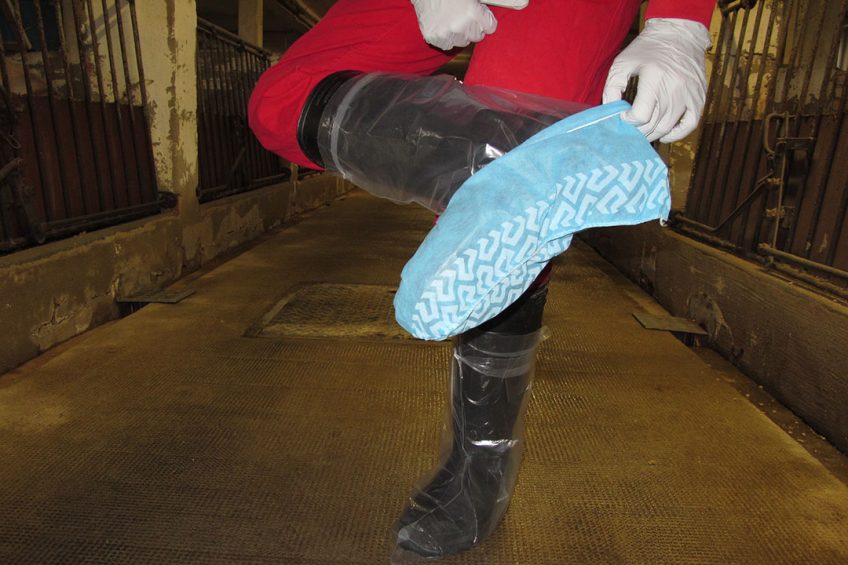
Salmonella is an increasing problem in European pig farms and this is worrying because of the danger of it spreading to humans. It is a complex multifactorial condition, and various control methods are being tried. Work in Germany has shown that it is possible to eliminate the disease from commercial herds.
Salmonella Typhimurium – whose natural host is the mouse – tends to be the most problematic on pig farms where it is easily transmitted to pigs, humans and other species. It is very resilient; it can survive in dust for up to 4 years, for instance, which makes control very difficult.
In humans it can cause severe disease, depending on the health status of the person infected and the infectious dose. The same applies to pigs. Most farms don’t see severe clinical signs but if the infectious pressures rise, then severe scouring can occur in the nursery section leading to diarrhoea in weaners – which is hard to control – or an increased number of runts.
Herds on some farms even show classic signs of clinical salmonellosis which, in pigs, is normally only seen with the typical serovar affecting swine, being Salmonella Choleraesuis.
Monitoring procedure
Due to European legislation, in Germany a procedure to monitor slaughtered pigs has been instigated through the German quality and safety (QS) system. Most German farms deliver their finished pigs within the QS system. The Salmonella monitoring is done by serological samples taken either 2 weeks before slaughter or as meat-juice samples directly at slaughter.
Farms delivering over 200 pigs a year must provide 60 samples annually, equally spaced throughout the 12-month period. The farms are then categorised from category 1 (the best) to category 3 (the worst) by the number of positive samples checked by ELISA test.
Despite farms in the ‘bad’ category being obliged to implement control measures to reduce Salmonella pressures, the overall number of positive samples has continued to rise. The main reason is that finishing farms are at the end of the production chain; if they buy infected piglets they cannot solve the problem at its root, even if they try. The infection should be stopped at the beginning. Sows shedding Salmonella bacteria are an important source of infection among piglets.

Detection and control of Salmonella
What can be done to detect and control Salmonella on such farms? If monitoring shows a rising prevalence of positive samples or a weaner buyer complains about a breeding farm, it is possible to take ‘sock and environmental swab’ samples. These samples are very sensitive and are the best method to assess the burden and spread of Salmonella on-farm. Alternatives are examination of classically ill pigs after death or to take faecal samples, especially when clinical disease occurs. These measures allow identification of the type of Salmonella involved.
Nowadays, most farms try to control Salmonella by using acids in feed or water. They also try to improve hygiene procedures, but these efforts rarely lead to a satisfactory result. An abstract by Helen Lynch and others from Ireland, presented at the European Symposium of Porcine Health Management (ESPHM) in Dublin in 2016, showed that in-feed acids are not able to protect piglets from infection.

Another publication in Dublin indicated that acids were, to some extent, able to lower serological titres, which is often the cause of failure of such programmes. Infection still takes place but, because titres are low, producers think they are buying healthy animals. However, after a while they will start shedding again and the farms become contaminated. That vicious cycle causes the Salmonella pressure to rise again.
Vaccination in breeding sows
An oral presentation by Judy Bettridge from the UK’s Animal and Plant Health Agency, at the 2019 ESPHM in Utrecht, the Netherlands, described vaccination at the top of the breeding pyramid. It showed that it was possible to reduce the amount of S. Typhimurium shedding in animals on farms lower down the pyramid, though other types of Salmonella did not seem to have been reduced.
A reduction, at least in the case of Salmonella Derby, which often can be seen as an accompanying infection of S. Typhimurium, will show up – it is just a matter of time. Experience in Germany suggested that, while the vaccination of sows with Salmoporc (Ceva Animal Health) had the biggest influence on the shedding of S. Typhimurium, the oral vaccination of gilts still at the piglet stage – before expected infection – led to broader protection, with cross-protection against S. Derby. That was proven by a study with a S. Derby challenge strain. The result was that orally vaccinated pigs showed a significantly reduced detection rate in the ileocaecal lymph nodes and in the caecum, as presented to the International Swine Health Service congress in Cloppenburg, Germany in 2019.
If there is S. Typhimurium on a farm, whether accompanied by other Salmonella serotypes or not, the best effect of a vaccination protocol implemented on a farm can be seen when the whole herd is replaced with gilts that were twice orally vaccinated as piglets. With usual replacement rates, that normally takes about 30 months. The breeding herd within the UK study presented at ESPHM in Utrecht had not yet reached that stage. Nevertheless, despite the fact that the herd referred to had only reached the 18-month stage, the conclusion by the authors was that multiplier farm vaccination was effective as a Salmonella reduction strategy and provided ‘substantial benefits’ to the pyramid.
Early pig protection
Protecting pigs early is key to control. Studies have shown that nurseries have the highest infection pressure. Piglets at that stage are very susceptible to infections. Having just been weaned they have not built up full protection against every pathogen with which they are confronted in the nursery and, at six weeks old, almost all of the maternally derived antibodies are dramatically decreasing.
Since the piglets have come from small, litter-sized groups and are being grouped in larger batches, often having been sorted by size as well, there can be a considerable amount of mixing. As a result, even if there are only 1 or 2 sows in a farrowing group shedding Salmonella, this can be spread to the whole batch.
Piglets are often slow to eat after weaning and their guts are more open to infections. In addition, the nursery environment is usually warm and the first feed provides a very good growing medium for Salmonella. If cleaning and disinfection is not well done, then the Salmonella pressure on the piglets increases leading to a high number of positive animals.
Serological testing, through blood samples – usually as part of a monitoring system – gives an indication of what is happening at farm level, although it does not provide any information on the status of individual animals. Sometimes seroconversion – the time period during which a specific antibody develops and is detectable in the blood – occurs quite late.
A group of animals can therefore show as being well in the serological test even though they can already be shedding Salmonella. Blood samples only show that the animals have had contact with Salmonella, but there is no information on the type of Salmonella. Sock and swab samples are sensitive compared with faecal samples, as pigs don’t always shed the Salmonella. But the Salmonella can stay alive in the surroundings and can therefore be more easily detected by the sock or swab method.

Samples taken every 6 months
On German farms taking part in Salmonella control programmes, samples are normally taken at each stage of production every 6 months. The improvement can be seen in the number of positive pens or compartments compared with the previous sampling points. On farms with vaccinated pigs, serological tests can give a hint of any improvements.
The good news is that the combined vaccination of sows and piglets helps to reduce the risk of Salmonella entering the food chain. In combination with improved hygiene, optimum management – involving how often pigs are mixed, how they are fed and rodent control, etc. – and a thought-out feeding strategy, vaccination can lead to a short-term reduction of Salmonella pressure on a farm and also of clinical signs. In the long term, it can help to produce pigs with a very low incidence of Salmonella, almost reduced to zero.
One example is a newly built pig unit comprising 3,000 productive sows which started off with gilts from a Salmonella-contaminated breeding herd that had been orally vaccinated as piglets. They were re-vaccinated at the 160th day of life and at each subsequent farrowing. This farm is still producing piglets, but no Salmonella has been found from sock samples taken from the nurseries for 4 years.
Author: Dr Kathrin Lillie-Jaschniski, veterinary service manager EU zone, Ceva Animal Health
Join 18,000+ subscribers
Subscribe to our newsletter to stay updated about all the need-to-know content in the pigsector, three times a week. Beheer
Beheer
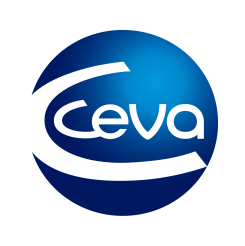
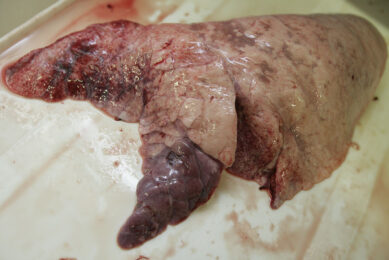
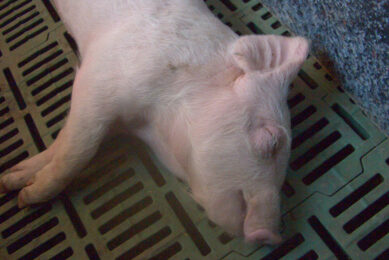
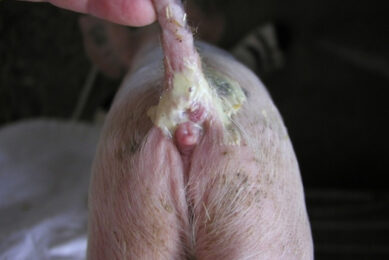
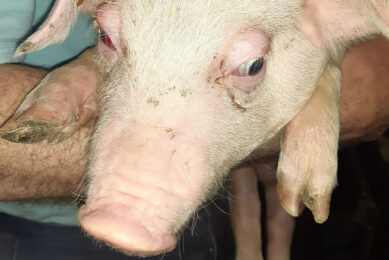
 WP Admin
WP Admin  Bewerk bericht
Bewerk bericht